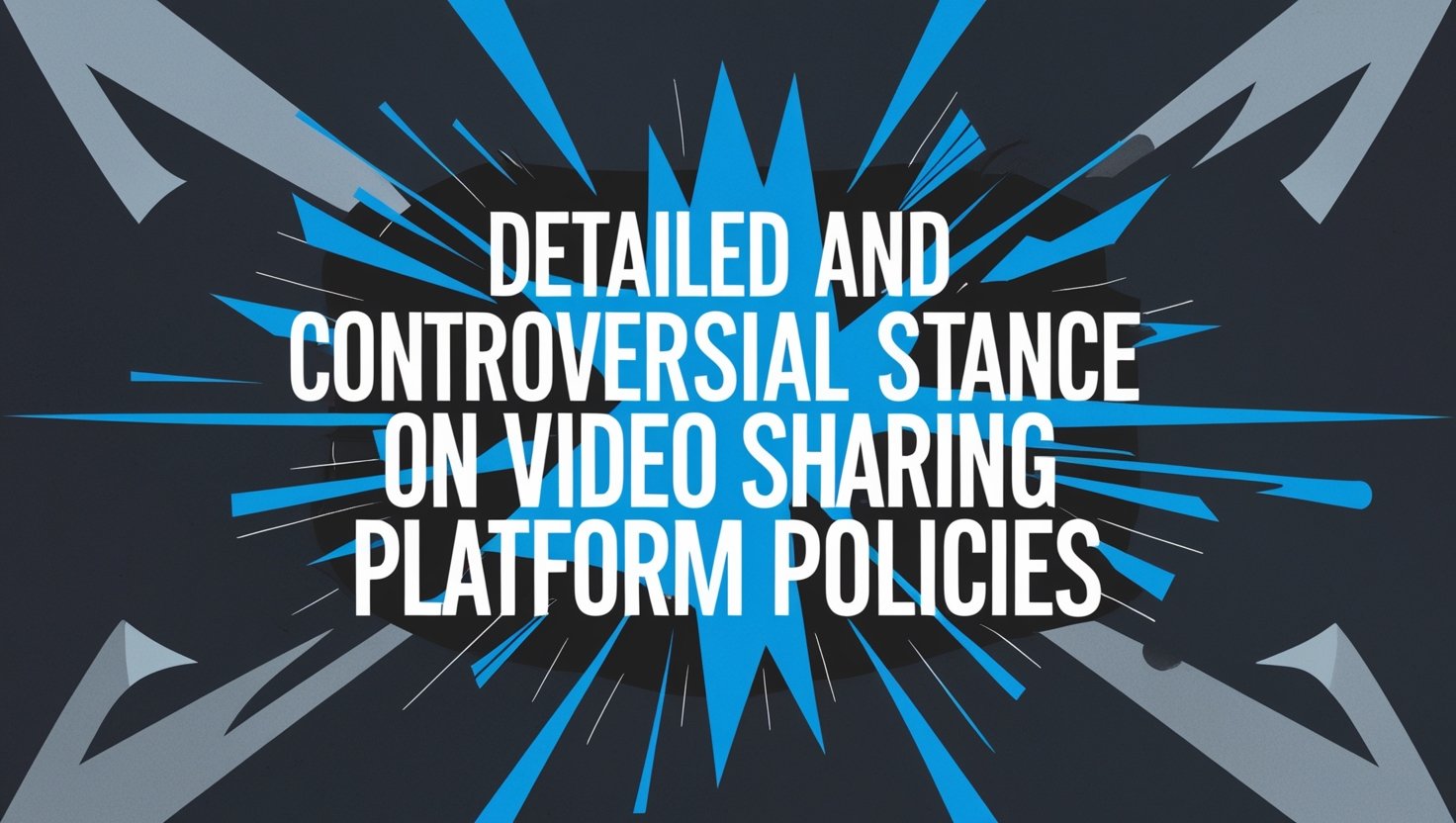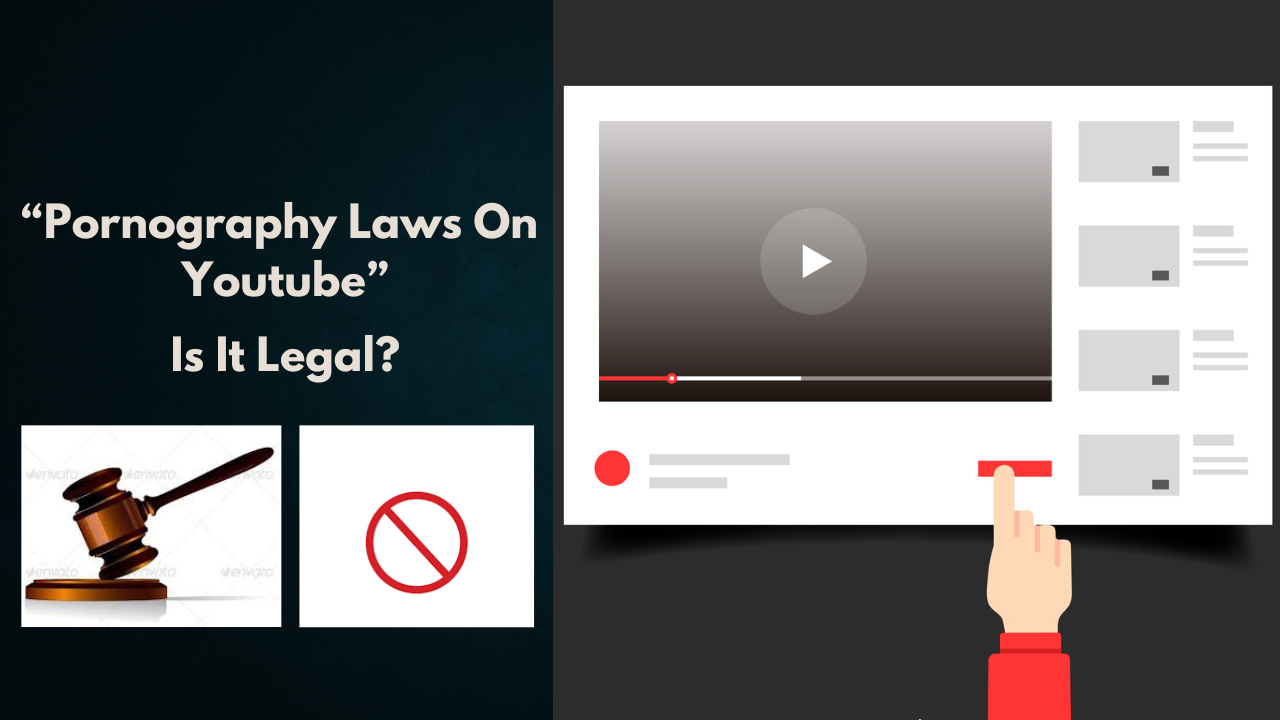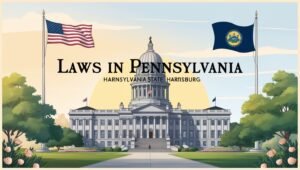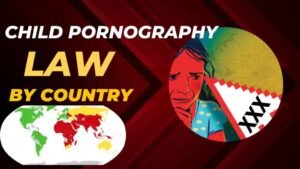Think about yourself as a content creator who creates content on human sexual activity, sexual reproduction, and sexual health, and One day, you find your channel flagged, videos taken down, or your account suspended. On the other hand, as a viewer, you might see some adult videos and be surprised why YouTube doesn’t remove them. These situations highlight the difficulties of cross-pornography laws YouTube – a platform trying to balance creative freedom with legal and community standards. As an audience, we know it is good for us because there are many different types of creators in this world who want to earn money through YouTube by doing the wrong things.
But, wait As a good content creator you have a deep understanding of Youtube guidelines and their laws related to adult or pornography content. That saves your channel from getting a permanent ban on YouTube.
Now our research team has analyzed the policies and community guidelines allowed on YouTube and created detailed information on the YouTube pornography laws and community guidelines.
Historical Overview Of Pornography Laws Youtube
Has nudity been allowed on YouTube in the past?
In the past, YouTube allowed nudity in certain categories such as education and others. However, due to changes, developments, and landmark cases, Google has revised its terms and conditions over the years.
Also, YouTube has faced legal problems about illegal content, like child pornography. They’ve had to work more closely with police to remove illegal videos quickly and stop them from spreading.
These events pushed YouTube to tighten its rules and make sure the platform is safer and more friendly for advertisers and users alike over the years.
Evolution of YouTube’s Policies on Pornography Laws
Early Policies:
In the beginning, YouTube was more relaxed about nudity and sexual content. They relied on community guidelines and reports from users. Some videos with nudity were allowed if they were educational or artistic. However, this led to controversies because rules were not always enforced consistently, and there were criticisms about inappropriate content.
Changes Over Time:
Over time, YouTube responded to major cases and user feedback by creating clearer guidelines. The goal was to solve problems and meet the expectations of users and advertisers. Policies gradually became stricter to make the platform safer.

Some landmark cases and incidents have led to changes in the policies, guidelines, rules, and regulations for the pornography laws YouTube.
The “Adpocalypse” in 2017 pushed YouTube to make its rules tougher. They started being stricter about which videos could make money from ads. YouTube began stopping ads on videos that didn’t fit what advertisers wanted, like ones with explicit content or controversial topics. This change was to make sure advertisers felt safer and ads showed up next to more family-friendly videos and For a more comprehensive case commentary and detailed information, please visit the website or click here.
Current Policies:
Today, YouTube strictly prohibits all explicit content, including nudity meant for sexual purposes. Creators need to be very careful not to include anything pornographic to avoid strikes or having their channels banned. YouTube uses advanced technology and human reviewers to enforce these strict rules.
Understanding these changes helps users and creators navigate YouTube responsibly within the current guidelines.
Impact on Creators
Challenges Faced by Creators
Content creators who produce educational or artistic content that includes nudity or sexual themes often face significant challenges. They must navigate a complex landscape of guidelines to ensure their content is not flagged or removed. Many creators have expressed frustration over the inconsistency in enforcement and the lack of clear communication from YouTube.
For instance, creators of sex education content often struggle to keep their videos monetized and visible. Despite providing valuable information, these videos are frequently demonetized or age-restricted, limiting their reach and financial viability.
Personal Stories
Numerous creators have shared their experiences with YouTube’s policies. Some have had their channels suspended or videos removed despite following the guidelines. These stories highlight the difficulties in creating content within such a restrictive framework.
For example, a popular sex educator on YouTube had her entire channel demonetized, despite her videos being purely educational. She had to appeal multiple times and engage with YouTube support to get her content reinstated.

Do YouTube’s Content Policies Differ by Country or Are They the Same Worldwide?
These rules ban explicit content like pornography and nudity meant for sexual purposes.
- Community Standards: These guidelines keep YouTube safe for all users and are enforced the same way everywhere.
- Legal Compliance: YouTube follows local laws in each country.
- Age Restrictions: Age limits for watching certain content can be different depending on local laws. Some countries might have stricter age checks.
- Government Requests: Sometimes, governments ask YouTube to remove content that breaks local laws, even if it doesn’t break YouTube’s global rules.
Examples of YouTube’s Pornography Policies in Different Countries
- Germany: YouTube quickly removes hate speech and Nazi symbols because of strict laws.
- India: YouTube may take down content about blasphemy and obscenity that might be allowed elsewhere due to local regulations.
- United States: Due to strong free speech protections, YouTube allows more content compared to other countries with stricter regulations.
- China: YouTube is mostly blocked and heavily censored because of strict government control.
- United Kingdom: YouTube has strict rules against harmful content, especially for young viewers, due to specific regulations.
- Australia: YouTube swiftly removes content related to illegal activities, extreme violence, or explicit material due to strict laws.
- California: YouTube takes down content with illegal activities, major violence, or explicit material due to strict laws. Here is the detailed information about YouTube pornography laws in California.
For further details Visit Here
Community Reactions
Viewer Perspectives
The YouTube community has mixed reactions to the platform’s policies. Some viewers appreciate the stricter guidelines, believing they create a safer environment. Others feel that the policies are too restrictive and stifle creativity.
For example, many viewers were supportive of YouTube’s decision to demonetize videos with harmful or explicit content following the Adpocalypse. They believed it made the platform safer and more advertiser-friendly. However, others criticized YouTube for being overly cautious and limiting creative expression.
Creator Feedback
Creators have voiced their concerns about the lack of transparency and consistency in YouTube’s enforcement of its policies. Many feel that the platform’s automated systems are prone to errors, leading to unjustified strikes and removals.
For instance, a group of creators formed a coalition to advocate for better communication and clearer guidelines from YouTube. They argued that the current system was unfair and disproportionately affected smaller creators who lacked the resources to appeal effectively.
Future Outlook Pornography Laws Youtube
Potential Changes
The future of YouTube’s content policies is likely to be shaped by ongoing legal and technological developments. As governments around the world continue to impose stricter regulations on online content, YouTube may need to adapt its guidelines to comply with these changes.
Technological Advances
Advancements in AI and machine learning could improve YouTube’s ability to identify and remove inappropriate content more accurately. However, these technologies also raise concerns about privacy and the potential for censorship.

FAQs (Frequently Asked Questions)
Questions:- Nudity is never allowed on YouTube.
Answer:- The answer is: False, While sexually explicit content, like pornography, isn’t allowed on YouTube but we have actually allowed nudity when the primary purpose is educational, documentary, scientific, or artistic.
Let’s take a look at the example to have a proper understanding a creator uploads a video of the greatest works of art in history which contains nude artwork.
In another video, a creator uploads a compilation of hacked photos and clips that contain nude celebrities.
Do either of these videos violate our Community Guidelines?
Yes, the second video violates the sex and nudity policy because the content and purpose of the video are meant to be sexually gratifying.
Of course, there are gray areas and lots more to our policy around sex and nudity on YouTube.
For More Click Here
Question: What is the difference between age-restricted content and content that violates YouTube’s guidelines?
Answer: Age-restricted content is content that YouTube has determined is not appropriate for viewers under a certain age, typically 18. This content may include strong language, violence, or mild nudity that is not sexually explicit. While it can still remain on the platform, users must verify their age to view it.
Content that violates YouTube’s guidelines, on the other hand, is removed from the platform. This includes sexually explicit content, hate speech, and content that promotes harmful or dangerous activities. Age-restricted content can be viewed by adults who are logged in, while guideline-violating content is not allowed at all.
Question:- Videos of minors in real school fights are allowed on YouTube.
Answer:- The answer is: False, Content that endangers the emotional and physical well-being of minors is not allowed on YouTube. A minor is someone who’s not an adult, which is anyone younger than 18 years old in most countries. If you see content that violates this policy, please report it. If you believe that a child is in danger you should reach out to your local law enforcement agency to report the situation immediately. Let’s look at more examples. A creator uploads a video teaching their child how to ride a dirt bike.
The child’s safety equipment is appropriate and is well supervised by their parent.
Another creator uploads a video featuring a group of minors setting up fireworks without the presence of adults.
Do either of these videos violate our Community Guidelines?
Yes, the second video violates the child safety policy. When a child is clearly supervised by an adult Some activities involving risk are allowed as long as those activities don’t violate Community Guidelines. But what about pulling a prank on a kid, pretending their family abandoned them? Would that be a violation?
To learn more about this, go to the YouTube Help Center article on child safety.
Question: How does YouTube’s algorithm detect and flag inappropriate content?
Answer: YouTube uses a combination of machine learning algorithms and human reviewers to detect and flag inappropriate content. The algorithms analyze various factors such as video titles, descriptions, tags, and the actual video content to identify potential violations of YouTube’s guidelines. These algorithms are trained on vast amounts of data to recognize patterns and identify content that may require further review.
When the algorithm flags a video, it is often reviewed by human moderators who make the final decision on whether the content violates YouTube’s policies. This two-step process helps ensure accuracy and fairness, although it is not without its flaws and occasional errors.
Question: What are the consequences of receiving a community guidelines strike?
Answer: Receiving a community guidelines strike on YouTube can have serious consequences for content creators. The penalties increase with each strike within a 90-day period:
- First Strike: The creator will not be able to upload content, live stream, or do any other channel activities for one week.
- Second Strike: If a second strike is received within the same 90-day period, the creator will be unable to post content for two weeks.
- Third Strike: A third strike within 90 days will result in the permanent removal of the channel from YouTube.
Strikes expire after 90 days, but it is crucial for creators to avoid repeated violations to maintain their channel’s good standing.
Question: How can creators appeal a content removal or strike?
Answer: Creators can appeal a content removal or strike by following these steps:
- Go to YouTube Studio: Log in to your YouTube account and go to YouTube Studio.
- Find the Video or Notice: Locate the video that was removed or the notice indicating a strike.
- Submit an Appeal: Click on “Appeal” and provide a detailed explanation of why you believe the content does not violate YouTube’s guidelines. Be specific and reference YouTube’s policies to support your argument.
YouTube will review the appeal and notify you of their decision. If the appeal is successful, the video will be reinstated, and the strike will be removed.
Question: What is YouTube’s policy on sexually suggestive thumbnails and titles?
Answer: YouTube’s policy prohibits sexually suggestive thumbnails and titles that are designed to attract viewers in a misleading or inappropriate manner. Thumbnails and titles that contain nudity, sexually explicit content, or are intended to be sexually gratifying are not allowed.
Creators should ensure their thumbnails and titles accurately represent the content of their videos and do not violate community guidelines. Misleading or sexually suggestive thumbnails and titles can lead to videos being removed and channels receiving strikes.
Question: Are there any exceptions to the prohibition of explicit content?
Answer: Yes, there are exceptions to the prohibition of explicit content on YouTube. Content that includes nudity or explicit material may be allowed if it is presented in an educational, documentary, scientific, or artistic context. Examples include:
- Educational Videos: Videos explaining human anatomy or sexual health that include diagrams or medical illustrations.
- Documentaries: Documentaries that explore topics related to sexuality in a serious and informative manner.
- Artistic Content: Videos featuring nudity in an artistic context, such as performances or exhibitions of nude art.
However, these videos must be appropriately labeled, provide sufficient context, and avoid any elements that could be perceived as sexually gratifying.
References
For those interested in delving deeper into the topic, here are some valuable resources:
- https://support.google.com/youtube/answer/2802002?hl=en#
- https://youtu.be/zIDNXK3op9M
- https://support.google.com/youtube/thread/178333446?sjid=3942292138773153452-AP
- https://support.google.com/youtube/answer/2801999?hl=en#:~:text=Never%20put%20minors%20in%20harmful,such%20as%20asphyxiation%20or%20electrocution.
- https://transparencyreport.google.com/youtube-policy/featured-policies/child-safety?hl=en




